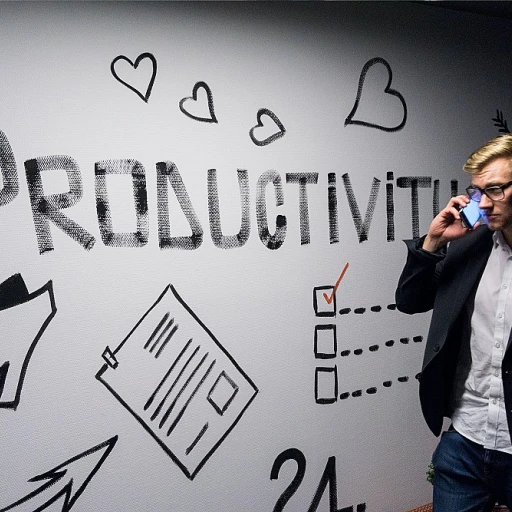
Understanding the Flex Office Concept
Exploring the Dynamics of a Flexible Work Environment
The concept of a flexible office, often referred to as a flex office, is paving the way to a more dynamic work environment. In recent years, businesses are increasingly seeking ways to adapt their office spaces to accommodate flexibility, efficiency, and innovation. This approach deviates from the traditional office setup to a more hybrid and adaptable workspace model.
Offices designed under the flex office model optimize space by allocating resources based on need rather than assigned desks. This can involve rotating desk assignments, utilizing coworking spaces, and implementing private office slots. Additionally, meeting rooms are arranged for multifunctional usage, effectively supporting professional interactions. This model enhances productivity by allowing employees to choose workspaces that complement their tasks, be it in a virtual setting or a dedicated desk area.
For businesses, understanding flex spaces opens new avenues to manage real estate costs efficiently while fostering a vibrant work culture. The flexibility offered by these office designs encourages internal communication and collaboration without the restraints found in conventional office settings.
Though the transition to a flexible workspace is increasingly popular, it requires thoughtful execution to maximize benefits and minimize potential setbacks. Stay tuned as we further explore the numerous advantages and challenges involved in adopting the flex office model throughout this article.
Benefits of Flex Office for Businesses
Advantages of Flexible Workspaces for Businesses
Flex office concepts are transforming how businesses approach their workspace needs, paving the way for significant benefits in various aspects. One major advantage is the potential for increased productivity. Flexible work environments often encourage employees to choose spaces that best suit their tasks, whether it be a quiet, private office for focused work or a collaborative meeting room for team projects. Businesses can also enjoy significant cost savings. Traditional office spaces often involve expensive long-term leases and underutilized spaces. By transitioning to a flex office model, companies gain the ability to optimize their real estate usage effectively, reducing overhead costs and investing those savings back into the company. The hybrid work model that flex offices support is another critical benefit. Many employees value the option to work remotely or from a coworking space, enhancing work-life balance and increasing job satisfaction. This flexibility can also enhance recruitment and retention, as potential employees are drawn to companies offering adaptable work environments. From a communication standpoint, flexible workspaces foster better internal communication by providing environments that suit different types of interactions. For instance, dedicated desk spaces can be furnished with the technology needed for virtual meetings, enhancing professional communication with remote colleagues. Finally, businesses can scale their office space up or down as needed. Flex spaces offer a solution that can grow with the company, accommodating expansions without the hassle of relocating. This adaptability is especially valuable in dynamic industries where the pace of change demands quick adjustments. For more insights on how time management is evolving in these flexible work models, check out this exploration of the era of time 2.0.Challenges in Implementing Flex Office
Navigating the Roadblocks of Flexible Office Adoption
Transitioning into a flex office model, while promising numerous benefits, is not devoid of challenges. Businesses must systematically approach and address these hurdles to ensure a smooth adaptation to a more flexible work environment. One of the primary challenges in implementing a flex office is the reconfiguration of the physical office space. Designing flexible workspaces requires a delicate balance between open areas and designated rooms like meeting rooms or private offices. Ensuring seamless accessibility to flex spaces and dedicated desks is crucial for maintaining productivity and focus in the workplace. The integration of technology plays a significant role in overcoming many obstacles posed by a flexible workspace. Adequate technological infrastructure must be in place to support internal communication and collaboration, especially as the trend of working remotely continues to evolve. Innovative solutions in IT are driving efficient communication within hybrid workplace settings, bridging the gap between remote employees and those in the office. Furthermore, adapting real estate plans can be a significant consideration for businesses transitioning to this model. Long-term strategies for the optimization of office spaces, specifically in terms of reducing costs and improving flexibility, require careful planning. Balancing business activities with the availability of appropriate workspaces ensures the long-term success of a flex office. Lastly, fostering a flexible work culture within the organization is vital. Navigating this cultural shift means actively engaging employees in the transition towards a flexible office model. Open communication about the process, along with training and support, can encourage employees to embrace new working methods, enhancing overall workplace satisfaction. Navigating these challenges, though demanding, is instrumental in ensuring that both employees and businesses thrive in the new era of flexible workspaces. For more insights on how communication planning plays a pivotal role in crafting effective future work environments, explore this resourceful article.Impact on Employee Experience
Redefining the Employee Experience with Flex Spaces
The adoption of flex office models is transforming the employee experience in profound ways, promoting a more balanced and engaging work environment. By allowing employees the flexibility to choose their workspaces, businesses can foster a sense of autonomy and empower individuals to work in settings that enhance their productivity. Office spaces, once characterized by static desks and confining walls, are being reimagined into dynamic environments. These flexible spaces can include dedicated desks, coworking areas, private offices, and virtual meeting rooms, offering a hybrid approach to the traditional workplace. The flexibility in choosing a work setting leads to heightened job satisfaction by accommodating different work styles. Employees can switch between a quiet corner to focus on tasks or a more collaborative space for brainstorming sessions. Effective communication is also enhanced through this model. With the ability to choose different meeting rooms or virtual spaces, communication becomes more seamless, supporting a culture of transparency and collaboration. This kind of flexibility is not just a perk but a potential driver of professional growth and workplace engagement. The challenge lies in maintaining a cohesive team spirit while working remotely or in disparate locations. However, businesses can overcome this with strategic use of technology, ensuring internal communication remains robust, and team dynamics are nurtured despite the physical distance. Ultimately, the shift towards flex spaces represents a new type of office setup that champions personalization and flexibility, paving the way for a more engaged and productive workforce.Technological Innovations Supporting Flex Office
Technological tools reshaping flex office dynamics
The rise of technology is fundamentally transforming the way businesses adopt flex office solutions. In this age of digital innovation, various tools and platforms have become indispensable in creating a seamless transition and enhancing workplace productivity. Here's how technology is supporting this shift:- Cloud-based infrastructure: With the ability to securely store and access data from anywhere, cloud solutions empower employees to seamlessly transition between different office spaces, be it a flexible workspace or a private office. This fosters collaboration and improves productivity by eliminating the need for physical data storages.
- Communication platforms: Efficient communication is at the heart of a successful flex office environment. Platforms dedicated to professional communication, such as instant messaging tools and virtual meeting systems, are vital for enabling internal communication and maintaining a cohesive work environment despite the geographical dispersion of teams.
- Workspace management apps: The smooth allocation and booking of desks, meeting rooms, and other office resources are critical for flex offices. Workspace management tools ensure that employees can easily find and reserve a dedicated desk, enhancing the user experience.
- Advanced video conferencing: Virtual meetings have all but replaced traditional gathering methods, especially in hybrid workspaces. High-quality video conferencing technology helps bridge the gap between work remotely scenarios and the need for face-to-face interactions in office spaces.
- Smart office solutions: Automation and IoT integrations in office spaces are transforming workplace dynamics. From adjusting lighting and controlling temperature to tracking room occupancy, intelligent systems are creating more efficient and comfortable working environments within flex spaces.












